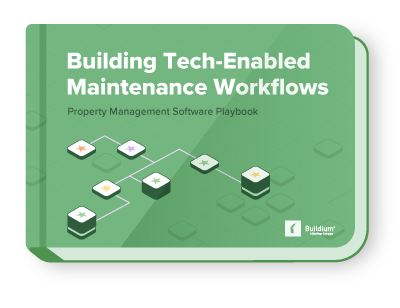In January of 2021, 38 percent of rental owners surveyed in Buildium and Propertyware’s 2021 Rental Owners’ Report, Volume 1 planned on acquiring new properties in the next two years. That’s an 8 percent jump from five months before, in the midst of the pandemic. This clearly represent an opportunity for those who have property management strategies in place for growth.
Chart of Accounts
Want clearer, cleaner books? What about a more useful view into your properties or just easier accounting in general?
Get the GuideAt the same time, they’re looking to professionals to take the burden of managing those properties off their shoulders. If you’re a property manager who has been considering expanding your business and growing your portfolio, now may be the time.
But there’s more to expanding your portfolio than simply adding new doors. It takes planning, budgeting, and communication. Without a growth plan, you could end up growing too quickly or too slowly. Quick growth may come at the expense of service or company culture. Meanwhile, slow growth could put your bottom line in jeopardy.
To grow your business without introducing chaos, take these eight steps (and property management strategies) that will help you get more property management clients without straining your company.
#1: Set Your Business Goals
The first step in determining the right property management strategies for your business is to determine what you want to accomplish. Ask yourself exactly how you want to expand. Are there particular neighborhoods and regions that interest you? Do you want to add doors quickly or gradually? What kinds of properties are you looking to add to your portfolio?
Take a look at your projected budget for the year, as well as your staffing plans. After all, with every door you take on, you increase work for your staff, as well as money spent up front on renovations, marketing, and general upkeep. Don’t increase your door count faster than your money and your people can keep up.
Set a timeline for expansion and place benchmarks along the way. Think about where you want the business to be after the first quarter, the first half of the year, and so on.
#2: Study the Market and Other Property Management Companies
Next, get a thorough understanding of the markets where you want to expand. Ask yourself these questions:
- How many rental units are in the area and what kind?
- Is it a renters’ market or an owners’ market?
- Are there roadblocks to low vacancy rates, such as lack of public transportation or few job opportunities that would attract residents?
- Are there municipal plans that will make the market more attractive to renters soon?
- Are there opportunities to improve services?
- Are there opportunities to raise rent?
- Are owners satisfied with competing property management services, or is there room for improvement?
Take a close look at other property management companies in the area with door counts similar to your goal. What does their company infrastructure look like? How are they marketing properties and what amenities do they offer?
If you can, find out what their portfolio looks like and how their daily operations work—and how they use technology to get it all done.
That research should give you some actionable benchmarks for your own company. As you study the market and other property management companies within it, you may find you have to adjust your goals or search for prospective owners in new target areas. Keep researching until you’ve found a market that’s a good fit and goals that are realistic for your business.
#3: Staff Up and Build the Right Tech Stack
As you grow, you’ll find that your current staffing structure and tech stack won’t serve your company or your clients as well. As you take a look at other, larger property management companies in the market, pay attention to where they have staffed up and where they have brought in tech to help them reach their business goals.
The right tech stack will help your company grow without putting a strain on your staff. A basic tech stack will include:
- Email and chat apps to communicate with staff, owners, and residents
- Cloud storage for property and company documents
- Listing syndication
- Maintenance tracking software
- Digital bill and rent payment
- Resident application and screening apps
Of course, if you can think of a task, there’s probably an app for it. Reservation apps allow residents to sign up for space in gyms, pools, and other common areas, for example.
You can cobble together a bunch of different apps for different tasks, or you can look into a property management software solution that covers all your bases.
In fact, a good property management software solution could even help you reduce staff, despite growth. For example, if you can automate maintenance tracking and vendor invoicing, you’ll be able to handle more requests with hopefully less stress. If you get your residents to use a Resident Center to communicate with your team, you’ll also make the whole process more efficient and may be able to cut down on traditional “front desk” service tasks.
#4: Make Your Business Findable
Once you have a growth plan in place, think about how to get your name out there so you can grow. If you haven’t already, it’s time to make sure prospective owners can find you online.
This might be a good time to take a hard look at your website and do some updating. Make sure there are landing pages for your listings, your services, and your About page. Include a contact form across your site so owners can get in touch with you, as well. If you want to operate in specific markets, make sure you list those when describing your business.
Finally, include keywords on your landing pages that make it easy for Google and other search engines to find your pages.
Next, claim your business on Google, Bing, Yelp!, and NextDoor. When you claim your business page with search engines, your company will show up with the correct contact information at either the top or on the right-hand side of the first search page. That gives users an opportunity to contact you, find your website, or leave a review.
Finally, set up business accounts on the social media channels your target owners frequent. LinkedIn is kind of a given, but consider other social platforms such as Twitter and Facebook for business updates and community information, or Instagram and Pinterest to showcase properties.
#5: Create a Solid Marketing Strategy
Now that you have a good digital presence, it’s time to start thinking about how to harness it to up your marketing game. Of course, you’ll still want to use traditional channels to reach your target owners. Integrating content and social media marketing simply gives you more reach to your audience.
Use your social media channels not for listings or company updates, but for thoughtful articles related to the rental market and anything your residents and owners might care about within their community. You may even consider setting up a blog or a podcast to discuss trends in rental housing or helpful tips for rental owners; anything that positions your company as an expert in the rental and property management fields.
To learn more about content and social media marketing for property managers, check out this article.
#6: Build Your Network
Some of your best deals may come through the people you know, and we’re not just talking about other property management companies. Real estate agents and even service professionals who work with rentals can be great sources for new owners. If you have a good working relationship, they may even refer you.
That said, it’s important to keep up a database of real estate agents, property managers, and other professionals who have referred you to owners. Returning the favor in the future further strengthens that relationship and can lead to closer partnerships in the future.
#7: Up Your Service Game
As you look to expand your portfolio, take the time to understand what your target owners are looking for in a property manager.
According to our 2021 Rental Owners’ Report, Volume 1, the following are the top ten services owners most wanted property management companies to handle:
- Rent and fee collection
- Maintenance and repairs
- Leasing properties and marketing vacancies
- Evictions
- Property inspections
- Accounting, bookkeeping, and tax prep
- Cleaning
- Legal advice
- Outdoor services
- Construction and renovation
Audit your current services to ensure you can take on more doors while maintaining a high level of service. Then, look at other services you can add on to attract new owners. Other services owners in our report were looking for included:
- Interior design and staging
- Insurance services
- Purchasing, selling, and brokering investment property sales
- Financial and investment advice
- Analytics to maximize profitability
Look at services other property management firms are providing. Ask owners in your target areas for services they’re looking for. Definitely look into adding services that owners want but other property managers don’t have.
#8: Plan Your Property Management Strategies With Your Team
Pull all of the steps into a comprehensive plan with measurable goals and benchmarks. Then communicate that plan to your entire team. Take them through every step of your property management strategies and how success will be measured. Then, assign tasks to appropriate team members, along with reasonable due dates to finish those tasks.
You may want to consider a project management tool such as Trello or Asana to help you plan and execute the work you need to do to expand your portfolio.
If you’re working with a property management software solution, check to see if it has an open API that will allow you to connect project management or other apps to your property management tool. That way, all of the work is in one place.
It seems intuitive to let your property management company expand naturally. As new owners sign on, then you spend the money and create the infrastructure to accommodate them. But doing so can lead to over- or under-budgeting, a decline in quality of service, and important company processes that fall through the cracks. You don’t want that.
Planning your expansion purposefully with property management strategies, on the other hand, will help you measure progress and adjust for successes and pitfalls as you grow. Using a property management software solution can help you expand by automating processes and pulling all important documents, information, and communications into one secure place.
Read more on Growth

